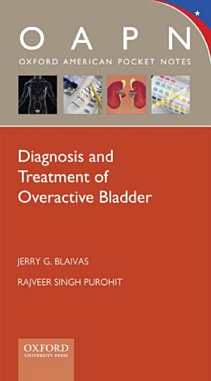Treating Kidney Stones
How do you treat Kidney Stones?
For patients who do have symptoms from kidney stones, there is a variety of options to treat these and increasingly these options involve less and less pain and discomfort for the patients. 20 to 25 years ago, most patients had open surgery to remove their kidney stones. Gradually, this was replaced with shockwave lithotripsy where patients used to lie in a tub of water and have ultrasound waves projected into their stone to break the stone apart.
Can Stones be Dissolved?
Calcium stones cannot be dissolved. Uric Acid stones can usually be dissolved. Patients with uric acid calculi either have very acidic urine and medications that decrease the acidity of the urine such as potassium citrate (Urocit K) will often dissolve the stones preempting the need for surgery.
When do you use Shock Wave Lithotripsy (SWL) for Stones?
These days SWL typically takes about 1 hour under sedation. It is best for moderate sized stones(between 1cm to 2cm) in the kidney that can be visualized on X-Rays (typically calcium stones).
What is the Problem with Shock Wave Lithotripsy?
While most patients tolerate the procedure well there are some problems with SWL. For one, smaller stones and Uric acid stones can sometimes be difficult to visualize on X-ray, making knowing where to focus the SWL energy difficult. In addition, SWL breaks apart the stone but does not remove the fragments. Sometimes these fragments can cause pain when they pass or not pass at all.
What about Ureteroscopy to Treat Stones?
More recently, most stones can be more definitively treated with ureteroscopy which entails placing a patient under anesthesia and using a very small scope to go into the penis to go up into the kidney. A small laser breaks the stone fragments apart and they can be retrieved through a small basket.
In our experience, we find that the most stones can be definitively treated with the ureteroscopy with high success rates. The risks of ureteroscopy include the risk of ureteral injury, which is quite low, some bleeding, infection, and the possibility of leaving a small fragment behind that could become symptomatic.
How do you Treat Very Large Stones Called Staghorn Calculi?
For very large stones, a percutaneous nephrolithotomy may be an option to remove the stone. This entails using a small incision in the back of the patient and placing a scope through this incision directly into the kidney and the advantage to the percutaneous nephrolithotomy is very large stones called staghorn calculus can be removed with this. These stones would otherwise in the old days require open surgery to have them removed.
The majority of patients who do develop a symptomatic stone, these days are treated with ureteroscopy or shockwave lithotripsy.
When Do You Use a Ureteral Stent?
Sometimes patients come into the emergency room with an obstructing stone and severe pain or stone that may have an infection behind it. For these patients a temporizing measure is placing a ureteral stent, which is a small tube with holes in it that traverses the ureter connecting the kidney to the bladder and bypasses the calculi. The stent allows the infection to drain and can help the patient’s pain and the patient will return in the future to have their stone more definitively treated. Sometimes a stent is also placed after a procedure such as ureteroscopy to help drain urine from the kidney.
What do you do after the Stone is Removed?
Once a stone is treated and removed, it is typically sent for analysis to determine its type. The most common kinds of stones are calcium oxalate, uric acid, struvite stones, and cystine stones or stonescaused by medications.
Once the type of stone is determined, the question becomes how we prevent stones from occurring in the future. If the patients have had more than one episode of stones and look like they are doing something to form recurrent stones then a test to that utilizes a 24 hour urine collection is done to determine what factors may be increasing the patients likelihood of forming stones.
In addition to this, blood tests to test for calcium and hormonal problems, such as elevated parathyroid hormone and uric acid, will often also be checked. Based on the results of these tests, patients can make changes in their diets or take medications to decrease their likelihood of forming stones.
———
Why Choose a Uro Center Urologist in New York?
The urologists at the Uro Center in New York are experts in their field, bringing academic and research based innovation to the clinical forefront. Our urology team specializes in areas of treatment such as: robotic surgery, reconstructive urology, men’s health & infertility, kidney stones, urologic oncology, penile implant surgery, urethral stricture, BPH, Urinary incontinence treatment, Mesh complications, Enlarged prostate treatment, Urodynamics, vesicovaginal fistula and female incontinence in New York.
Request an Appointment











